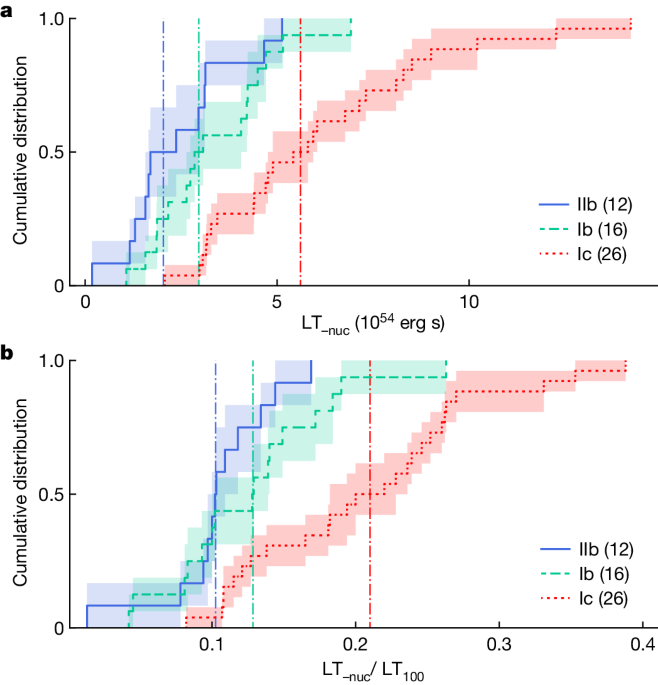Observational Evidence for Central Engine Activity Powering Stripped-Envelope Supernova Light Curves
Core Concepts
Stripped-envelope supernovae exhibit statistically significant observational evidence for a non-radioactive power source, likely a long-lived central engine, that contributes significantly to their luminosity.
Abstract
The study analyzes the energy budget of a sample of 54 well-observed stripped-envelope supernovae of all sub-types. The authors present statistically significant, largely model-independent, observational evidence that the luminosity of these supernovae is not solely driven by the radioactive decay of nickel synthesized in the explosion.
The authors consider various alternative energy sources or systematic errors that could explain this result, and conclude that the most likely option is the existence of a long-lived central engine, operating over approximately 10^3 to 10^6 seconds after the explosion. If the central engine is a magnetized neutron star, the authors infer that it would have an initial magnetic field of around 10^15 G and an initial rotation period of 1-100 milliseconds, suggesting that stripped-envelope supernovae may be the formation events of magnetars.
Stripped-envelope supernova light curves argue for central engine activity - Nature
Stats
The study analyzes a sample of 54 well-observed stripped-envelope supernovae.
The authors infer that the central engine, if a magnetized neutron star, would have an initial magnetic field of around 10^15 G and an initial rotation period of 1-100 milliseconds.
Quotes
"Here we analyse the energy budget of a sample of 54 well-observed stripped-envelope supernovae of all sub-types and present statistically significant, largely model-independent, observational evidence for a non-radioactive power source in most of them (and possibly in all)."
"We infer, from the observations, constraints on the engine properties. If, for example, the central engine is a magnetized neutron star, then the initial magnetic field is ≈1015 G and the initial rotation period is 1–100 ms, suggesting that stripped-envelope supernovae may constitute the formation events of the objects known as magnetars."
Key Insights Distilled From
by Ósma... at www.nature.com 04-17-2024
https://www.nature.com/articles/s41586-024-07262-x
Deeper Inquiries
What other types of central engines, besides magnetized neutron stars, could potentially power the luminosity of stripped-envelope supernovae?
In addition to magnetized neutron stars, other types of central engines that could potentially power the luminosity of stripped-envelope supernovae include black holes, rapidly rotating massive stars, and accreting white dwarfs. These central engines could provide the necessary energy through processes such as accretion disk formation, fallback accretion, or magnetic field interactions.
How do the authors' findings challenge or complement existing models of stripped-envelope supernova evolution and energy sources?
The authors' findings challenge existing models of stripped-envelope supernova evolution by providing statistically significant evidence for a non-radioactive power source in these events. This challenges the traditional view that the luminosity of these supernovae is mainly driven by the radioactive decay of nickel. The findings complement existing models by suggesting the presence of a long-lived central engine, which could explain the observed luminosity and energy budget of stripped-envelope supernovae.
What implications do these results have for our understanding of the formation and properties of magnetars?
These results have significant implications for our understanding of the formation and properties of magnetars. If stripped-envelope supernovae are indeed the formation events of magnetars, as suggested by the authors' findings, it provides insights into the origin of these highly magnetized neutron stars. The constraints on the engine properties inferred from the observations, such as the initial magnetic field strength and rotation period, offer valuable information for studying the formation mechanisms of magnetars and their connection to stripped-envelope supernovae.
0
